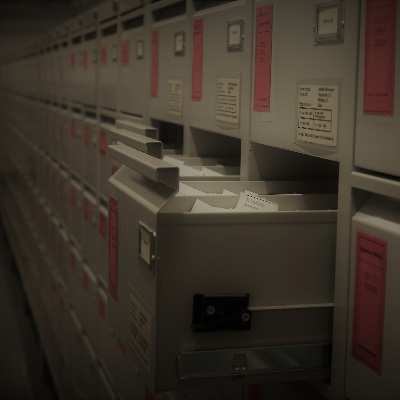Mikrofilmowanie (Microfilming) was the most common form of preserving files by the "C" division units and Division XVIII of Department I of the Ministry of the Internal Affairs. The microfilming consisted of a registration procedure (recording the microfilming in the archive log, microfilm archive log and recording the microfilm archival reference number in the general information card-index (KOI), writing the microfilm archival reference number on the covers of the microfilmed files), a qualification procedure (selecting documents from the file to be microfilmed) and the microfilming itself. Microforms (in the form of cut 8 mm microfilm placed in a jacket or A6 size microfiche) were labelled with a separate archival reference number (microfilm archival log number). As a rule, category "A" and "B" documents with preservation period of more than ten years (archival category) were eligible for microfilming; the "operative value" of the documents and the type of "crime" or subversive activity described in the files were, therefore, to be decisive in determining eligibility for microfilming. In the case of microfilming files of agents, informers, secret collaborators, etc., by design, documents from the personal dossier were microfilmed; the contents of the collaborator’s entire service dossier were not microfilmed, but only certain reports (some of the first and last and some of the more important ones from the period of collaboration). For microfilming the files of former collaborators, the prospective cooperation principle was decisive: files of collaborators with no prospect of cooperation were to be excluded from microfilming. For microfilming of operative case files, it was presumed that the form for opening the case, the summary or characteristics of the case and the order terminating the case were microfilmed. For microfilming pre-trial files (investigation control files), it was presumed that the orders initiating the investigation case, indictment, sentence or order terminating the case were microfilmed. As a rule, redundant documents, "operative technics" documents (i.e. wiretap transcripts, etc.), seized correspondence ("W" document) and "documents of no value" were excluded from microfilming. Information about the microfilming of files and the archival reference number of the microfilm was entered on the appropriate index-card in the general information card index and the archival log.

